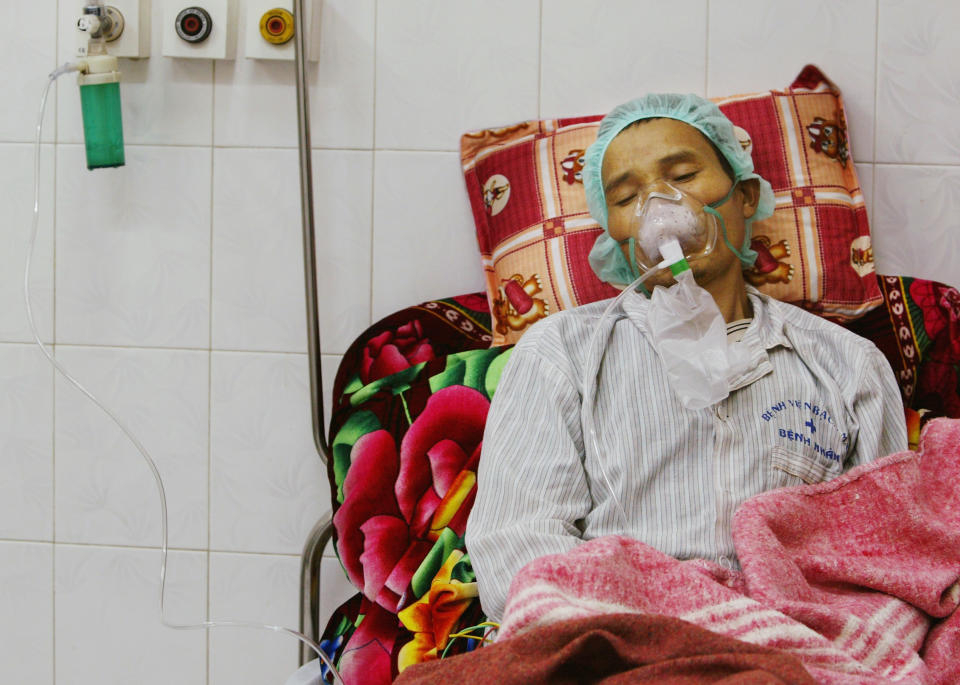The frightening $707 billion reality of a devastating global flu pandemic

The World Health Organisation has sounded the alarm over the world’s unpreparedness for a global influenza pandemic.
It’s said the cost of preventing such a crisis is less than 1 per cent of the cost of responding to it.
The World Economic Forum and Bill Gates have echoed the WHO’s concerns.
The Spanish flu killed up to 100 million people during its 1918-1920 attack, making it a greater killer than World War I.
And while medication has advanced since then, the risk of another devastating global outbreak isn’t a matter of if, but when, the World Health Organisation (WHO) has warned.
“The ongoing risk of a new influenza virus transmitting from animals to humans and potentially causing a pandemic is real,” WHO director-general, Tedros Adhanom Ghebreyesus, said this week to mark the release of the WHO’s Global Influenza Strategy for 2019-2030.
“We must be vigilant and prepared – the cost of a major influenza outbreak will far outweigh the price of prevention.”
“A severe pandemic can result in millions of deaths globally, with widespread social and economic effects, including a loss of national economic productivity and severe economic burdens on affected citizens and communities.”
What the global flu pandemic really costs
The WHO warned that while the global cost of pandemic preparedness comes in at around US$4.5 billion (AU$6.4 billion), the estimated cost of responding to a medium to severe pandemic is closer to US$500 billion (AU$707.2 billion).
“A severe pandemic can result in millions of deaths globally, with widespread social and economic effects, including a loss of national economic productivity and severe economic burdens on affected citizens and communities,” the WHO said.
In its strategy, the WHO added that the cost of preparedness is actually less than US$1 per person per year, but warned that many countries have critically underinvested in health systems for early detection, response and containment.
So what’s their plan?
The WHO’s 11-year plan would see governments form national programs designed to reduce seasonal influenza, reduce the risk of animal-human transmission and mitigate the impact of a pandemic.
“With the partnerships and country-specific work we have been doing over the years, the world is better prepared than ever before for the next big outbreak, but we are still not prepared enough,” said Tedros.
“This strategy aims to get us to that point. Fundamentally, it is about preparing health systems to manage shocks, and this only happens when health systems are strong and healthy themselves.”
“People rightly worry about dangers like terrorism and climate change (and, more remotely, an asteroid hitting the Earth). But if anything is going to kill tens of millions of people in a short time, it will probably be a global epidemic.”
Who else is worried?
The WHO isn’t the only one sounding the alarm over the risk of a pandemic.
Billionaire entrepreneur and Microsoft co-founder Bill Gates has admitted the threat of a flu pandemic keeps him awake at night.
“People rightly worry about dangers like terrorism and climate change (and, more remotely, an asteroid hitting the Earth). But if anything is going to kill tens of millions of people in a short time, it will probably be a global epidemic,” he wrote in his personal blog.
“And the disease would most likely be a form of the flu, because the flu virus spreads easily through the air. Today a flu as contagious and lethal as the 1918 one would kill nearly 33 million people in just six months.”
The World Economic Forum has also warned that the world is “badly under-prepared for even modest biological threats”.
“The frequency of disease outbreaks has been rising steadily. Between 1980 and 2013 there were 12,012 recorded outbreaks, comprising 44 million individual cases and affecting every country in the world,” the forum said in its Global Risks 2019 report.
In June 2018 there were – for the first time ever – outbreaks of six of the eight categories of disease in the WHO’s “priority diseases” list. If any had spread widely, it would have had the potential to kill thousands and create major global disruption.”
It warned that globalisation, deforestation and high-density living are all to blame.
And it referenced studies finding that the cost of an influenza pandemic would hit US$570 billion (AU$806.3 billion) in one year alone: “The same order of magnitude as climate change.”
“Influenza affects all countries, communities and individuals,” the WHO summarised.
“Seasonal influenza viruses will continue to circulate, and influenza viruses with pandemic potential will continue to emerge. This strategy serves as a global call for all countries and partners to prioritise the implementation of influenza programmes as an investment for greater health system strengthening and pandemic preparedness.”
Make your money work with Yahoo Finance’s daily newsletter. Sign up here and stay on top of the latest money, property and tech news.

 Yahoo Finance
Yahoo Finance 
